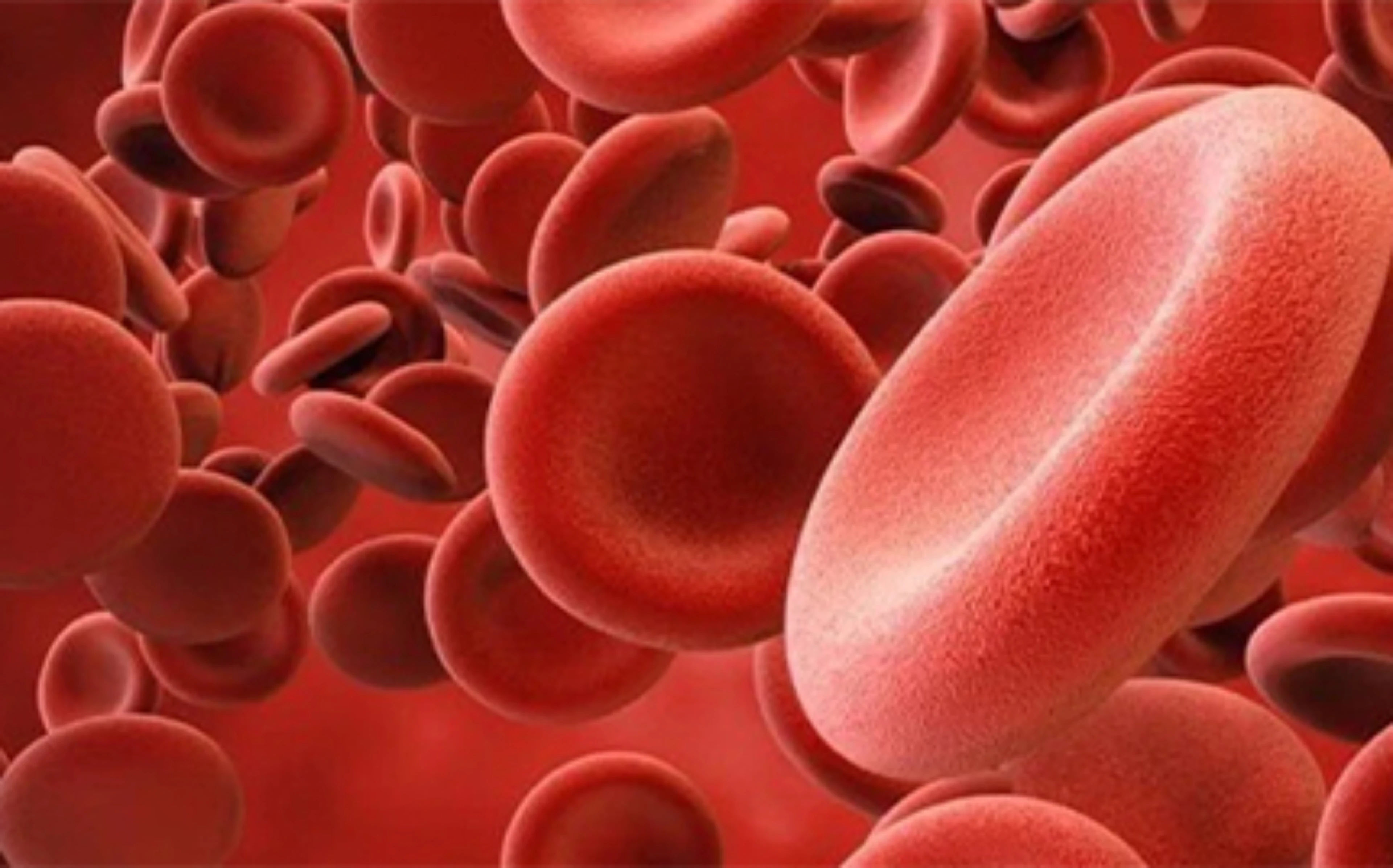- Article
- Source: Campus Sanofi
- May 8, 2025
Understanding TTP

What is TTP?
Thrombotic thrombocytopenic purpura (TTP)— A rare, life-threatening medical emergency
TTP is a rare, life-threatening thrombotic microangiopathy (TMA). There are approximately 3 cases per million people.1,2
The name thrombotic thrombocytopenic purpura describes the 3 main characteristics of the disease.
%20(1).png)
Thrombotic: characterized by the formation of microthrombi (blood clots) within a blood vessel, which clog the vessel and prevent blood circulation.
Thrombocytopenic: a lower-than-normal platelet count due to the consumption of platelets during microthrombi formation, which causes occlusion of microvasculature.

Purpura: spots of variable size on the skin or in the mucous membranes, due to small hemorrhages; they can be dark red and as small as a pinhead (petechiae) or purplish and 2 to 3 cm in diameter (ecchymosis).
Types of TTP
Acquired TTP3,4
- aTTP, also known as immune-mediated thrombotic thrombocytopenic purpura (iTTP)
- The most common form of TTP; approximately 95% of TTP cases are aTTP
- Caused by autoantibody inhibition of ADAMTS13 activity.
ADAMTS13=a disintegrin and metalloproteinase with thrombospondin type 1 motif, 13.
Hereditary TTP4,5
- Also known as congenital TTP, inherited TTP, familial TTP, or Upshaw–Schulman syndrome
- Very rare form of TTP; mainly detected in children
- Caused by mutations in the ADAMTS13 gene
Primary aTTP vs secondary aTTP2,6,7
Primary aTTP
- Primary aTTP refers to acquired autoimmune TTP for which there is no obvious underlying/precipitating cause/disease
- Primary aTTP accounts for the majority of cases of TTP
Secondary aTTP
- Secondary aTTP refers to acquired autoimmune TTP for which a defined underlying disorder or trigger can be identified, including connective tissue disease (eg, systemic lupus erythematosus), HIV infection, cytomegalovirus infection, and/or a specific precipitating factor (eg, pregnancy or drugs)
- Treatment of the underlying disorder and/or removal of the underlying precipitant may be required, as well as standard TTP therapy
|
TTP causes systemic microthrombi and consequent thrombocytopenia, hemolytic anemia, and organ ischemia. These symptoms—coupled with TTP’s rarity—can cause confusion with other TMAs, making TTP a challenge to diagnose.8-10 |
Signs and symptoms of aTTP include1,7-10
Petechiae, purpura, bruising (skin)
Headache, confusion, seizures, coma (neurological)
EKG abnormalities (cardiac)
Abdominal pain, diarrhea (gastrointestinal)

Proteinuria/hematuria (kidney)
Suspect aTTP?
The incidence of TTP is 2 to 6 per million individuals4
Rare diseases defined as
%20(1).png)
cases per million 11
Ultra-rare diseases defined as
.png)
cases per million 12
aTTP primarily affects young, healthy adults13,14

years of age on average

of people affected are women

higher aTTP incidence in the Black population
If left untreated, TTP is rapidly fatal8,15-17

acute mortality rate16,17

of TTP deaths occur within 24 hours of presentation8
Even with plasma exchange therapy (PEX), mortality risk persists15,16,18
Up to
.png)
acute mortality associated with episodes of aTTP 16,18
.png)
median time from diagnosis to death 16,18 in acute phase of TTP in patients treated with PEX15,18
-
Joly BS, Coppo P, Veyradier A. Thrombotic thrombocytopenic purpura. Blood. 2017;129(21):2836-2846. doi:10.1182/blood-2016-10-709857
-
Arnold DM, Patriquin CJ, Nazy I. Thrombotic microangiopathies: a general approach to diagnosis and management. CMAJ. 2017;189(4):E153-E159. doi:10.1503/cmaj.160142
-
Scully M, Cataland SR, Peyvandi F, et al; HERCULES Investigators. Caplacizumab treatment for acquired thrombotic thrombocytopenic purpura. N Engl J Med. 2019;380(4):335-346. doi:10.1056/NEJMoa1806311
-
Zheng XL, Vesely SK, Cataland SR, et al. ISTH guidelines for the diagnosis of thrombotic thrombocytopenic purpura. J Thromb Haemost. 2020;18(10):2486-2495. doi:10.1111/jth.15006
-
National Institutes of Health. Congenital thrombotic thrombocytopenic purpura. Updated July 12, 2018. Accessed February 15, 2022. https://rarediseases.info.nih.gov/diseases/9430/congenital-thrombotic-thrombocytopenic-purpura
-
Sukumar S, Lämmle B, Cataland SR. Thrombotic thrombocytopenic purpura: pathophysiology, diagnosis, and management. J Clin Med. 2021;10(3):536. doi:10.3390/jcm10030536
-
Azoulay E, Bauer PR, Mariotte E, et al; Nine-i Investigators. Expert statement on the ICU management of patients with thrombotic thrombocytopenic purpura. Intensive Care Med. 2019;45(11):1518-1539. doi:10.1007/s00134-019-05736-5
-
Scully M, Hunt BJ, Benjamin S, et al; British Committee for Standards in Haematology. Guidelines on the diagnosis and management of thrombotic thrombocytopenic purpura and other thrombotic microangiopathies. Br J Haematol. 2012;158(3):323-335. doi:10.1111/j.1365-2141.2012.09167.x
-
Gallan AJ, Chang A. A new paradigm for renal thrombotic microangiopathy. Semin Diagn Pathol. 2020;37(3):121-126. doi:10.1053/j.semdp.2020.01.002
-
Tsai H-M. Pathophysiology of thrombotic thrombocytopenic purpura. Int J Hematol. 2010;91(1):1-19. doi:10.1007/s12185-009-0476-1
-
Kaplan W, Wirtz VJ, Mantel-Teeuwisse A, Stolk P, Duthey B, Laing R. Rare diseases. In: Priority Medicines for Europe and the World. 2013 Update. Chap 6.19. World Health Organization. Accessed January 27, 2022. https://www.who.int/medicines/areas/priority_medicines/MasterDocJune28_FINAL_Web.pdf?ua=1
-
Harari S, Humbert M. Ultra-rare disease: an European perspective. Eur Respir Rev. 2020;29(156):200195. doi:10.1183/16000617.0195-2020
-
Terrell DR, Williams LA, Vesely SK, Lämmle B, Hovinga JAK, George JN. The incidence of thrombotic thrombocytopenic purpura-hemolytic uremic syndrome: all patients, idiopathic patients, and patients with severe ADAMTS-13 deficiency. J Thromb Haemost. 2005;3(7):1432-1436. doi:10.1111/j.1538-7836.2005.01436.x
-
Reese JA, Muthurajah DS, Kremer Hovinga JA, Vesely SK, Terrell DR, George JN. Children and adults with thrombotic thrombocytopenic purpura associated with severe, acquired Adamts13 deficiency: comparison of incidence, demographic and clinical features. Pediatr Blood Cancer. 2013;60(10):1676-1682. doi:10.1002/pbc.24612
-
Goel R, King KE, Takemoto CM, Ness PM, Tobian AAR. Prognostic risk-stratified score for predicting mortality in hospitalized patients with thrombotic thrombocytopenic purpura: nationally representative data from 2007 to 2012. Transfusion. 2016;56(6):1451-1458. doi:10.1111/trf.13586
-
Kremer Hovinga JA, Vesely SK, Terrell DR, Lämmle B, George JN. Survival and relapse in patients with thrombotic thrombocytopenic purpura. Blood. 2010;115(8):1500-1511. doi:10.1182/blood-2009-09-243790
-
Sayani FA, Abrams CS. How I treat refractory thrombotic thrombocytopenic purpura. Blood. 2015;125(25):3860-3867. doi:10.1182/blood-2014-11-551580
-
Peyvandi F, Scully M, Kremer Hovinga JA, et al. Caplacizumab reduces the frequency of major thromboembolic events, exacerbations and death in patients with acquired thrombotic thrombocytopenic purpura. J Thromb Haemost. 2017;15(7):1448-1452. doi:10.1111/jth.13716
The burden of thrombotic thrombocytopenic purpura (TTP)
Short- and long-term implications threaten patients with aTTP
Short-term implications
Mortality
- Untreated, aTTP has an acute mortality rate of up to 90%1-3
- Approximately 55% to 80% of deaths among patients with aTTP occur within 2 weeks of diagnosis4-6
- Significantly higher rates of in-hospital mortality have also been reported in patients with TTP and CV complications(19.7% vs 4.1%)7
Health-related quality of life
- Rates of depression (10% to 73%) are considerably higher in patients following an episode of TTP, compared with both healthy individuals and reference populations8-12
Morbidity
- Most common complications in patients hospitalized with TTP are CV complications (25%), such as stroke (10%), heart failure (8%), and acute coronary syndrome (6%)7
Economic burden
- Short-term treatment of acute thromboembolism such as stroke, acute MI, or TIA requires multiple healthcare resources, including hospitalization with diagnostic tests (eg, CT scans), administration of thrombolytic and/or other drugs, admittance to intensive care/critical care unit, and/or ongoing specialist nursing care (eg, physiotherapy, speech therapy)13-15
An increased time at risk of microvascular thrombosis can lead to irreversible organ damage to the heart, brain, and kidneys16
Long-term implications
Mortality
- 23-fold increase in mortality was observed in patients who did not reach a platelet recovery rate of 5 × 109/L per day by day 3 of PEX17
- Inability to normalize platelet count over 7 days of PEX was associated with a significantly increased risk of death18
Health-related quality of life
- Long-term outcomes are driven by the consequences of platelet aggregation, leading to systemic microvascular thrombosis7,19
Morbidity
- Recovery following an acute episode of aTTP is not a resolution of symptoms but the beginning of a long-term morbidity burden: hypertension, stroke, and depression requiring pharmacological treatment were significantly greater for TTP survivors versus the age- and sex-matched US population8,9,20
Economic burden
- Other long-term consequences that have been reported include neurocognitive impairment, depression, hypertension, headaches, and SLE; all require healthcare resources on an ongoing basis11,20
| Long-term morbidity leads to suboptimal health-related quality of life, in both mental (anxiety, depression) and physical functioning, and potentially reduces life expectancy8-20 |
aTTP=acquired thrombotic thrombocytopenic purpura; CT=computed tomography; CV=cardiovascular; MI=myocardial infarction; PEX=plasma exchange; SLE=systemic lupus erythematosus; TIA=transient ischemic attack; TTP=thrombotic thrombocytopenic purpura.
-
Scully M, Hunt BJ, Benjamin S, et al; British Committee for Standards in Haematology. Guidelines on the diagnosis and management of thrombotic thrombocytopenic purpura and other thrombotic microangiopathies. Br J Haematol. 2012;158(3):323-335. doi:10.1111/j.1365-2141.2012.09167.x
-
Kremer Hovinga JA, Vesely SK, Terrell DR, Lämmle B, George JN. Survival and relapse in patients with thrombotic thrombocytopenic purpura. Blood. 2010;115(8):1500-1511. doi:10.1182/blood-2009-09-243790
-
Sayani FA, Abrams CS. How I treat refractory thrombotic thrombocytopenic purpura. Blood. 2015;125(25):3860-3867. doi:10.1182/blood-2014-11-551580
-
Goel R, King KE, Takemoto CM, Ness PM, Tobian AAR. Prognostic risk-stratified score for predicting mortality in hospitalized patients with thrombotic thrombocytopenic purpura: nationally representative data from 2007 to 2012. Transfusion. 2016;56(6):1451-1458. doi:10.1111/trf.13586
-
Benhamou Y, Assié C, Boelle P-Y, et al. Development and validation of a predictive model for death in acquired severe ADAMTS13 deficiency-associated idiopathic thrombotic thrombocytopenic purpura: the French TMA Reference Center experience. Haematologica. 2012;97(8):1181-1186. doi:10.3324/haematol.2011.049676
-
Chaturvedi S, Bhatia N. Predictors of survival in thrombotic thrombocytopenic purpura. Haematologica. 2013;98(5):e58. doi:10.3324/haematol.2012.079400
-
Balasubramaniyam N, Yandrapalli S, Kolte D, Pemmasani G, Janakiram M, Frishman WH. Cardiovascular complications and their association with mortality in patients with thrombotic thrombocytopenic purpura. Am J Med. 2021;134(2):e89-e97. doi:10.1016/j.amjmed.2020.06.020
-
Chaturvedi S, Abbas H, McCrae KR. Increased morbidity during long-term follow-up of survivors of thrombotic thrombocytopenic purpura. Am J Hematol. 2015;90(10):E208. doi:10.1002/ajh.24138
-
Falter T, Schmitt V, Herold S, et al. Depression and cognitive deficits as long-term consequences of thrombotic thrombocytopenic purpura. Transfusion. 2017;57(5):1152-1162. doi:10.1111/trf.14060
-
Han B, Page EE, Stewart LM, et al. Depression and cognitive impairment following recovery from thrombotic thrombocytopenic purpura. Am J Hematol. 2015;90(8):709-714. doi:10.1002/ajh.24060
-
Riva S, Mancini I, Maino A, et al. Long-term neuropsychological sequelae, emotional wellbeing and quality of life in patients with acquired thrombotic thrombocytopenic purpura. Haematologica. 2020;105(7):1957-1962. doi:10.3324/haematol.2019.226423
-
Alwan F, Mahdi D, Tayabali S, et al. Cerebral MRI findings predict the risk of cognitive impairment in thrombotic thrombocytopenic purpura. Br J Haematol. 2020;191(5):868-874. doi:10.1111/bjh.17126
-
Hughes PA. Comprehensive care of adults with acute ischemic stroke. Crit Care Nurs Clin N Amer. 2011;23(4):661-675. doi:10.1016/j.ccell.2011.08.009
-
Reed GW, Rossi JE, Cannon CP. Acute myocardial infarction. Lancet. 2017;389(10065):197-210. doi:10.1016/s0140-6736(16)30677-8
-
Lau CS, Mak A. The socioeconomic burden of SLE. Nat Rev Rheumatol. 2009;5(7):400-404. doi:10.1038/nrrheum.2009.106
-
Thejeel B, Garg AX, Clark WF, et al. Long-term outcomes of thrombotic microangiopathy treated with plasma exchange: a systematic review. Am J Hematol. 2016;91(6):623-630 doi:10.1002/ajh.24339
-
Liu C, Kallogjeri D, Dynis M, Grossman BJ. Platelet recovery rate during plasma exchange predicts early and late responses in patients with thrombotic thrombocytopenic purpura. Transfusion. 2013(5):1096-1107. doi:10.1111/j.1537-2995.2012.03857.x
-
Staley EM, Cao W, Pham HP, et al. Clinical factors and biomarkers predict outcome in patients with immune-mediated thrombotic thrombocytopenic purpura. Haematologica. 2019;104(1):166-175. doi:10.3324/haematol.2018.198275
-
Kremer Hovinga JA, Coppo P, Lämmle B, Moake JL, Miyata T, Vanhoorelbeke K. Thrombotic thrombocytopenic purpura. Nat Rev Dis Primers. 2017;3:17020. doi:10.1038/nrdp.2017.20
-
Deford CC, Reese JA, Schwartz LH, et al. Multiple major morbidities and increased mortality during long-term follow-up after recovery from thrombotic thrombocytopenic purpura. Blood. 2013;122(12):2023-2029. doi:10.1182/blood-2013-04-496752
The pathophysiology of thrombotic thrombocytopenic purpura (TTP)
TTP is characterized by potentially fatal systemic microthrombi1,2
TTP is caused by severely decreased activity of the ADAMTS13 enzyme. ADAMTS13 is the protease that cleaves von Willebrand factor (vWF). In patients with acquired TTP (aTTP), this deficiency is immune mediated.1
Decreased ADAMTS13 activity leads to an accumulation of ultra-large von Willebrand factor (ULvWF) multimers, which spontaneously bind to platelets and induce aggregation. This results in dangerous microthrombi that drive severe thrombocytopenia, microangiopathic hemolytic anemia, and organ ischemia.2
ADAMTS13=a disintegrin and metalloproteinase with thrombospondin type 1 motif, 13.
TTP pathophysiology
An in-depth exploration of the causes of TTP and the severe consequences of the disease.
What is the pathophysiology of aTTP?
3 Key mechanisms drive the pathophysiology of aTTP2

Auto antibody formation
Autoantibodies to ADAMTS13 inhibit its activity or enhance clearance of the enzyme.

ADAMTS13 deficiency causes uncleaved ULvWF
ADAMTS13 (the enzyme responsible for cleaving vWF in the blood-clotting process) is deficient, leaving platelet-hyperadhesive ULvWF strands intact to circulate without being cleaved.

Microthrombi formation
ULvWF accumulates and spontaneously binds to platelets, forming microthrombi.
Normal Physiology2,3
Thrombotic Thrombocytopenic Purpura2,3
Adapted from Joly B et al. Blood 2017 and Saad J & Schoenberger L 2018.
Formation of microthrombi causes2

Severe thrombocytopenia
(often platelets <30 × 109/L)

Microangiopathic hemolytic anemia
(MAHA)
characterized by the presence of schistocytes in blood smear

Organ ischemia
(lesions can occur in any organ, but they most frequently affect the heart, brain, gastrointestinal tract, and kidney)
Platelet aggregation leads to microthrombi formation, which can have fatal consequences.1,2 |
-
Tsai H-M. Pathophysiology of thrombotic thrombocytopenic purpura. Int J Hematol. 2010;91(1):1-19. doi:10.1007/s12185-009-0476-1
-
Joly BS, Coppo P, Veyradier A. Thrombotic thrombocytopenic purpura. Blood. 2017;129(21):2836-2846. doi:10.1182/blood-2016-10-709857
-
Saad J, Asuka E, Schoenberger L. Physiology, platelet activation. Updated May 9, 2021. Accessed November 15, 2021. https://www.ncbi.nlm.nih.gov/books/NBK482478/
Signs and symptoms of aTTP
The symptoms of aTTP are driven by microthrombi, which are unpredictable and potentially fatal1,2
Microthrombi can have serious acute and chronic consequences in TTP—putting patients at risk for devastating effects and death without urgent treatment.
Microthrombi can occur in any organ with microvessels, but the most commonly affected are3
Tissue and organ damage resulting from ischemia leads to increased levels of lactate dehydrogenase (LDH), troponins (heart), and creatinine (kidney).¹,⁴
Expert Opinion About aTTP
Signs and symptoms of acquired thrombotic thrombocytopenic purpura (aTTP) include1,4,5
Petechiae, purpura, bruising (skin)
Headache, confusion, seizures, coma (neurological)
EKG abnormalities (cardiac)
Abdominal pain, diarrhea (gastrointestinal)

Proteinuria/hematuria (kidney)

of TTP episodes result in ischemia due to platelet aggregation in the microcirculation of the brain.3
The consequences of microthrombi can be severe, with TTP potentially resulting in acute thromboembolic events such as1,2,4

Stroke

Myocardial infarction

Arterial thrombosis

Early death
Consequences can also be long term
-
Joly BS, Coppo P, Veyradier A. Thrombotic thrombocytopenic purpura. Blood. 2017;129(21):2836-2846. doi:10.1182/blood-2016-10-709857
-
Goel R, King KE, Takemoto CM, Ness PM, Tobian AAR. Prognostic risk-stratified score for predicting mortality in hospitalized patients with thrombotic thrombocytopenic purpura: nationally representative data from 2007 to 2012. Transfusion. 2016;56(6):1451-1458. doi:10.1111/trf.13586
-
Moake JL. Thrombotic thrombocytopenic purpura: the systemic clumping “plague.” Annu Rev Med. 2002;53:75-88. doi:10.1146/annurev.med.53.082901.103948
-
Scully M, Hunt BJ, Benjamin S, et al; British Committee for Standards in Haematology. Guidelines on the diagnosis and management of thrombotic thrombocytopenic purpura and other thrombotic microangiopathies. Br J Haematol. 2012;158(3):323-335. doi:10.1111/j.1365-2141.2012.09167.x
-
Azoulay E, Bauer PR, Mariotte E, et al; Nine-i Investigators. Expert statement on the ICU management of patients with thrombotic thrombocytopenic purpura. Intensive Care Med. 2019;45(11):1518-1539. doi:10.1007/s00134-019-05736-5
MAT-AE-2200643-V2-OCT-23